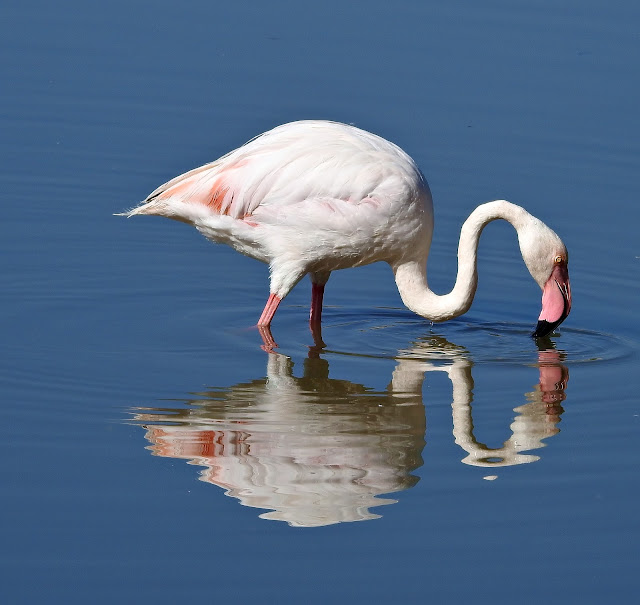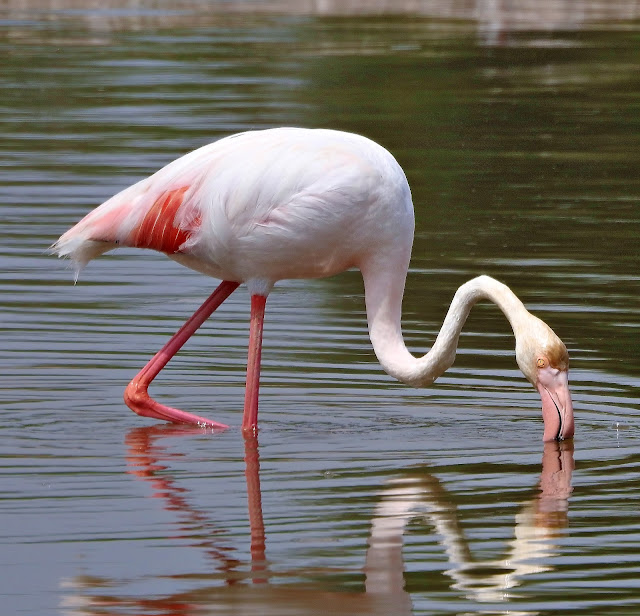The greater flamingo, Phoenicopterus roseus, stands as the most widespread and largest member of the flamingo family. This majestic bird is adorned with pinkish-white plumage, save for the red wing coverts and contrasting black primary and secondary flight feathers. The bill is a striking pink with a black tip, and the legs are a uniform pink, completing the iconic look of this species.
Adult greater flamingos can be identified by their height, ranging from 110 to 150 cm, and their weight between 2 and 4 kg. The largest males can reach up to 187 cm tall and weigh 4.5 kg. Observers should note the distinctive coloration, with the majority of the body being pinkish-white, red wing coverts, and black flight feathers. The pink bill with a black tip and entirely pink legs are also key identification features. The call of the greater flamingo is reminiscent of a goose-like honking.
Greater flamingos favor mudflats and shallow coastal lagoons with saline water, where they can be seen stirring the mud with their feet in search of food.
This species is common in the Old World, with a range that includes Northern and Sub-Saharan Africa, the Indian Subcontinent, the Middle East, the Levant, and Southern Europe. Notably, they are found in coastal regions and along water bodies such as the Nile River, the Persian Gulf, the Gulf of Aden, the Red Sea, and the Mediterranean.
Greater flamingos are social birds, often found in large flocks. They feed with their heads down, filtering out sustenance from the water with their specially adapted bills. During the breeding season, these birds engage in a fascinating display of spreading uropygial secretions over their feathers to enhance their color, a behavior likened to applying "make-up."
The vocalization of the greater flamingo is a distinctive honking, similar to that of a goose, which can be heard over considerable distances.
The species lays a single chalky-white egg on a mud mound, a typical breeding behavior for flamingos.
Greater flamingos feed on a diet that includes small shrimp, seeds, blue-green algae, microscopic organisms, and mollusks. They filter their food from the water with their downward-facing heads and movable upper jaws.
The IUCN Red List classifies the greater flamingo as Least Concern, indicating a stable population. However, they face threats from habitat encroachment and pollution in their water supplies.
In the voice of David Attenborough, one might say: "The greater flamingo, with its elegant stature and vibrant hues, is a testament to the wonders of the avian world. As it sifts through the shallows, one cannot help but be captivated by its grace and the delicate balance it maintains within its ecosystem."







%2021.jpg)
%2022.jpg)
%2023.jpg)








%2010.jpg)
%2011.jpg)
%2012.jpg)











